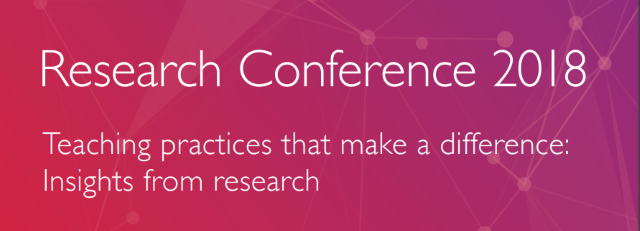
Sunday 12 August 2018
Start Date
12-8-2018 4:15 PM
End Date
12-8-2018 5:15 PM
Subjects
Aboriginal education, School improvement, Aboriginal schools, Teaching effectiveness, Teaching methods, Early childhood education, Attendance, Student engagement, School community relationship, Disadvantaged schools, Primary secondary education, Whole school approach, Geographic isolation
Abstract
Despite a great deal of goodwill, effort and funding, student achievement in the Kimberley region of Western Australia has shown little improvement in the last decade. Governments have intervened in a range of ways: tying funding to evidence that schools are closing the gap; improving conditions for teachers and principals working with remote communities; funding a bewildering range of attendance and engagement strategies; and supporting cultural relevance though a range of short-term skill and enrichment programs. This paper describes the Kimberley Schools Project, which is an alternative approach funded by the Western Australian Government through the Royalties for Regions program. It is a ‘low variation’ approach that asks volunteer schools to sign on to four common strands of activity: targeted teaching; early years learning and care; attendance and engagement; and connecting community, school and learning. The Project offers coaching and support to teachers and school principals in implementing these four strands. It’s too soon to tell whether this program will succeed where others have failed, but this paper documents the evidence behind the approach that has been taken and share some early insights about implementation.
Recommended Citation
Louden, B. (2018, August 12). Evidence-based approaches to school improvement: The Kimberley Schools Project [Paper presentation]. Research Conference 2018 - Teaching practices that make a difference: Insights from research. https://research.acer.edu.au/research_conference/RC2018/12august/3
Copyright Statement
Copyright Australian Council for Educational Research 2018
Place of Publication
Melbourne, Australia
Publisher
Australian Council for Educational Research (ACER)
ISBN
9781742865119
Geographic Subject
Western Australia
Included in
Evidence-based approaches to school improvement: The Kimberley Schools Project
Despite a great deal of goodwill, effort and funding, student achievement in the Kimberley region of Western Australia has shown little improvement in the last decade. Governments have intervened in a range of ways: tying funding to evidence that schools are closing the gap; improving conditions for teachers and principals working with remote communities; funding a bewildering range of attendance and engagement strategies; and supporting cultural relevance though a range of short-term skill and enrichment programs. This paper describes the Kimberley Schools Project, which is an alternative approach funded by the Western Australian Government through the Royalties for Regions program. It is a ‘low variation’ approach that asks volunteer schools to sign on to four common strands of activity: targeted teaching; early years learning and care; attendance and engagement; and connecting community, school and learning. The Project offers coaching and support to teachers and school principals in implementing these four strands. It’s too soon to tell whether this program will succeed where others have failed, but this paper documents the evidence behind the approach that has been taken and share some early insights about implementation.

